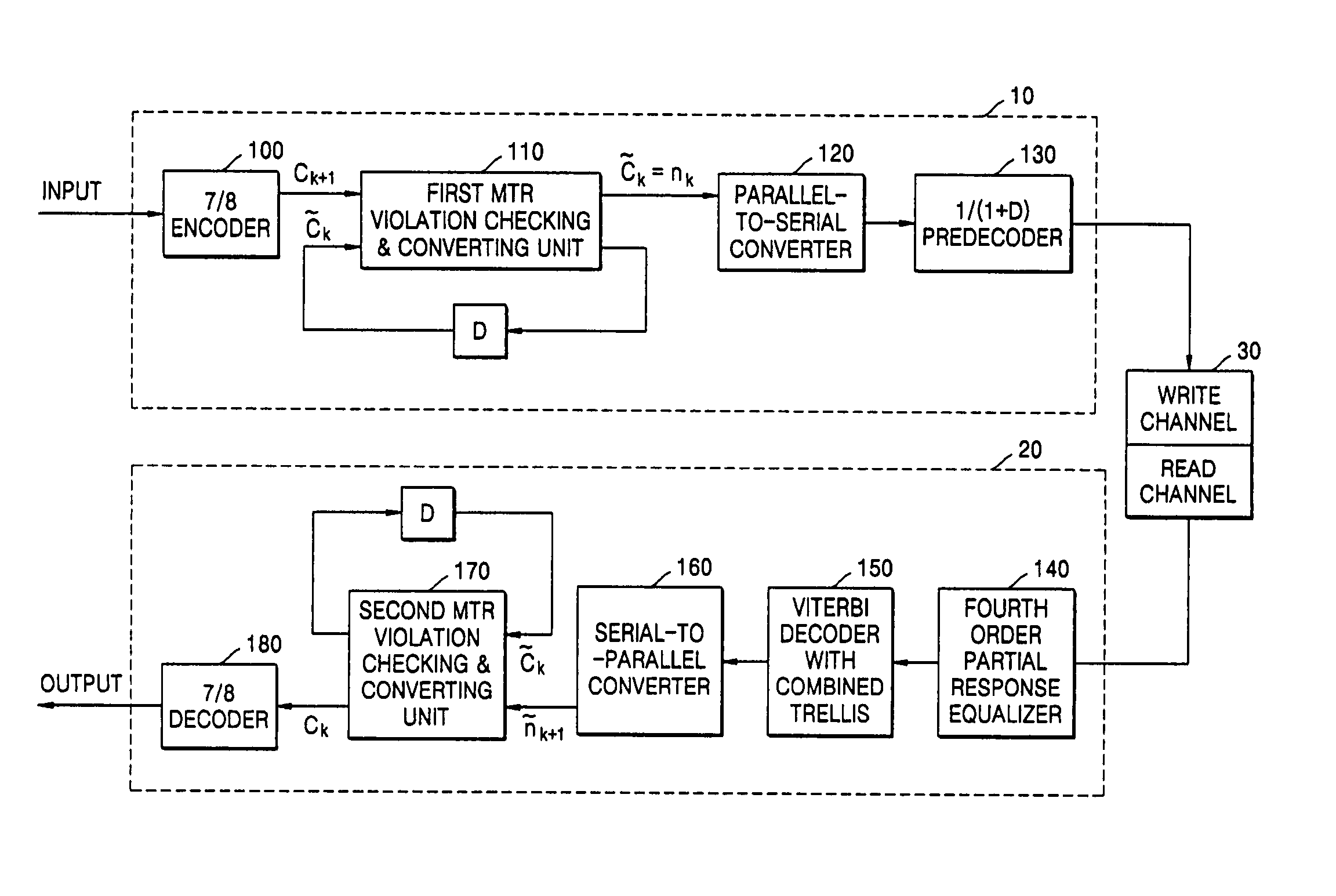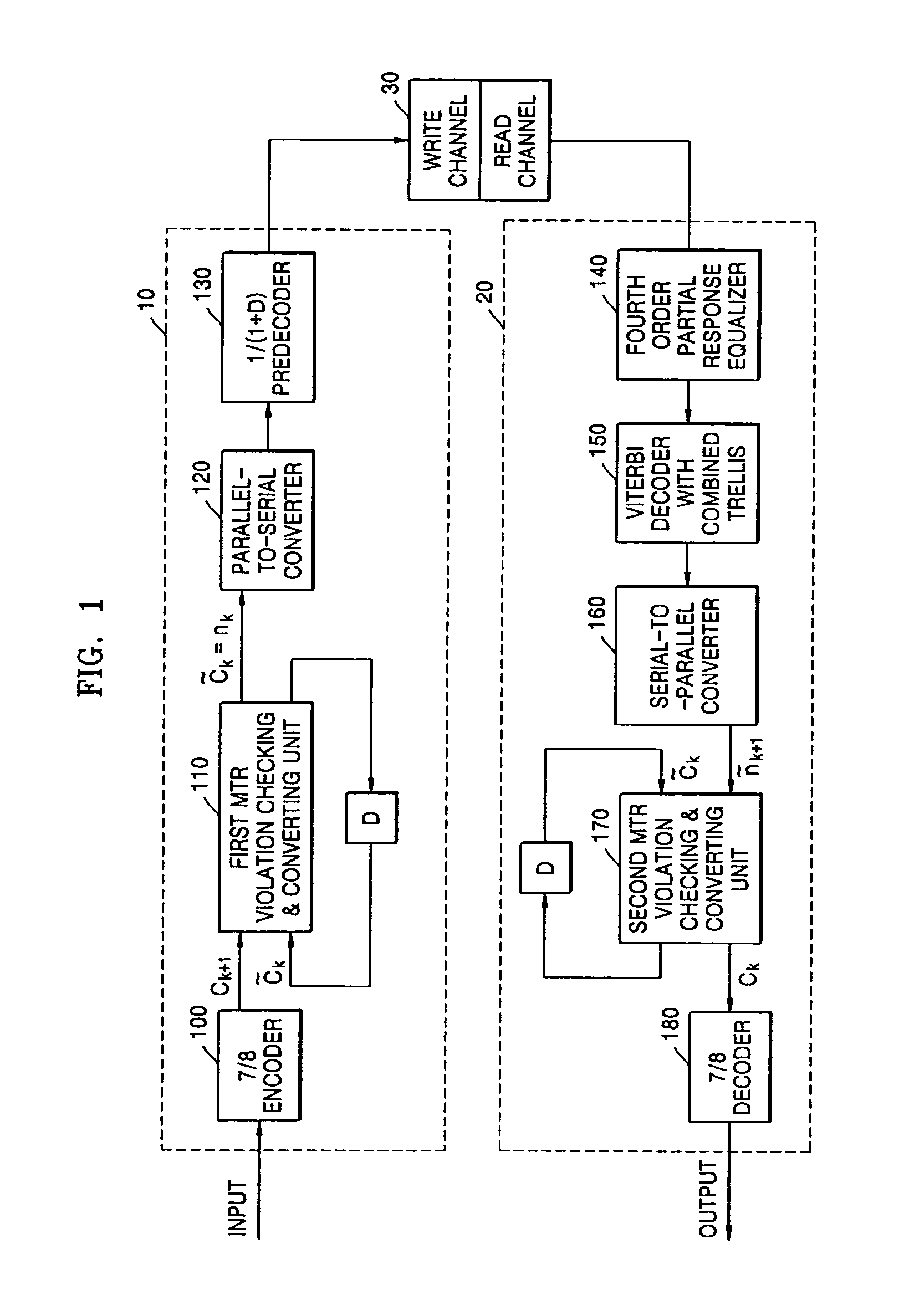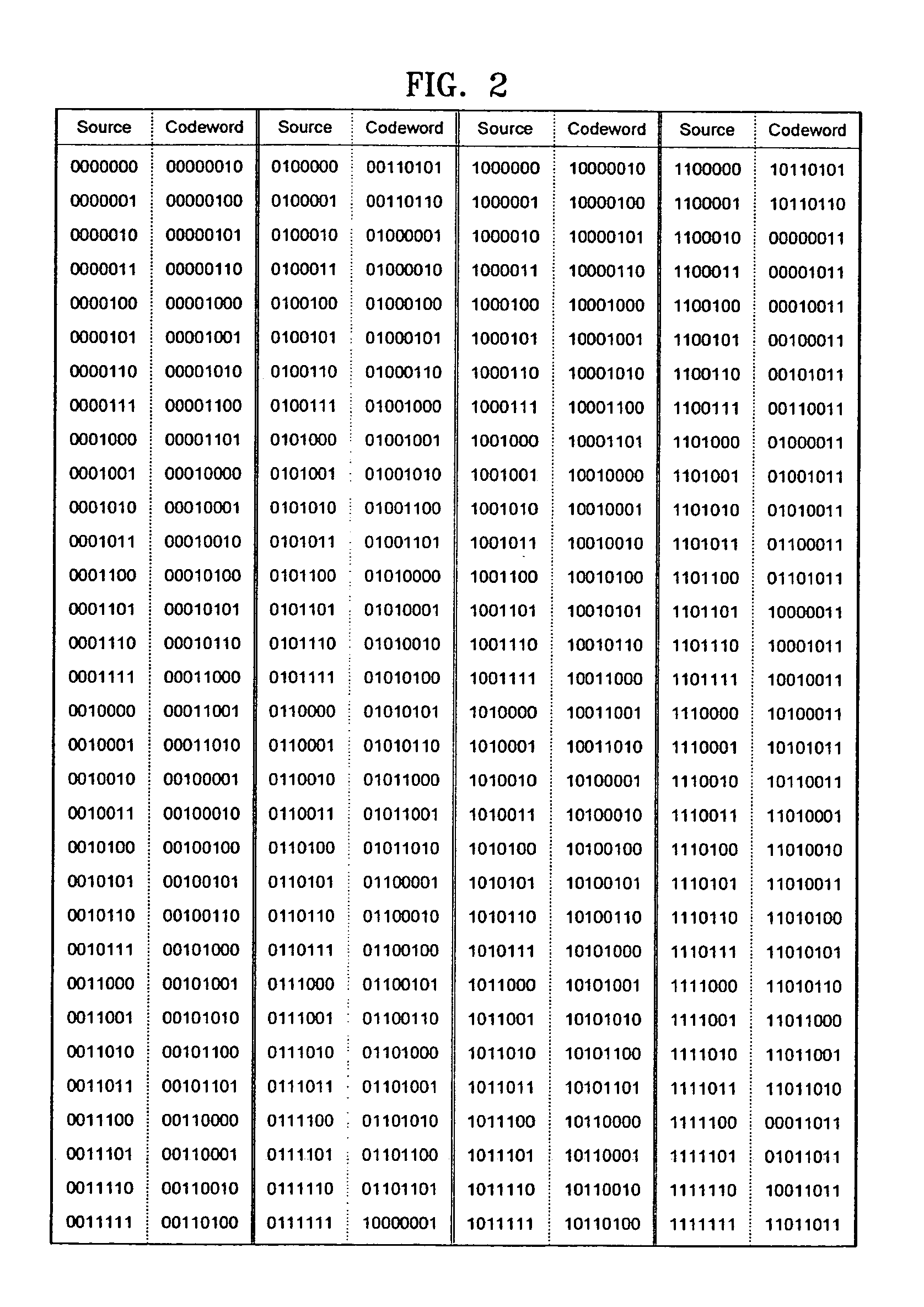Rate-7/8 maximum transition run code encoding and decoding method and apparatus
a technology of maximum transition run and code encoding, applied in the direction of digital recording/reproduction, digital signal error detection/correction, data recording, etc., can solve the problems of reduced data detection performance, limited recording density, limited code rate, etc., to achieve the effect of improving detection performance and code ra
- Summary
- Abstract
- Description
- Claims
- Application Information
AI Technical Summary
Benefits of technology
Problems solved by technology
Method used
Image
Examples
Embodiment Construction
[0049]Hereinafter, the present invention will now be described more fully with reference to the accompanying drawings, in which embodiments of the invention are shown.
[0050]FIG. 1 is a block diagram of a rate-7 / 8 MTR encoding and decoding apparatus according to an embodiment of the present invention.
[0051]Referring to FIG. 1, a rate-7 / 8 MTR encoding apparatus 10 includes a 7 / 8 encoder 100, a first MTR violation checking & converting unit 110, a parallel-to-serial converter 120, and a precoder 130.
[0052]The 7 / 8 encoder 100 generates a rate 7 / 8 MTR code for outputting a predetermined 8-bit codeword from 7-bit data. The first MTR violation checking & converting unit 110 checks whether codewords satisfy a predetermined constraint condition by connecting the 8-bit codeword and a subsequent 8-bit codeword, converts specific bits of the codewords if the codewords violate the MTR constraint condition, and does not convert the codewords if the codewords do not violate the constraint conditio...
PUM
| Property | Measurement | Unit |
|---|---|---|
| recording density | aaaaa | aaaaa |
| density | aaaaa | aaaaa |
| run-length | aaaaa | aaaaa |
Abstract
Description
Claims
Application Information
 Login to View More
Login to View More - R&D
- Intellectual Property
- Life Sciences
- Materials
- Tech Scout
- Unparalleled Data Quality
- Higher Quality Content
- 60% Fewer Hallucinations
Browse by: Latest US Patents, China's latest patents, Technical Efficacy Thesaurus, Application Domain, Technology Topic, Popular Technical Reports.
© 2025 PatSnap. All rights reserved.Legal|Privacy policy|Modern Slavery Act Transparency Statement|Sitemap|About US| Contact US: help@patsnap.com



